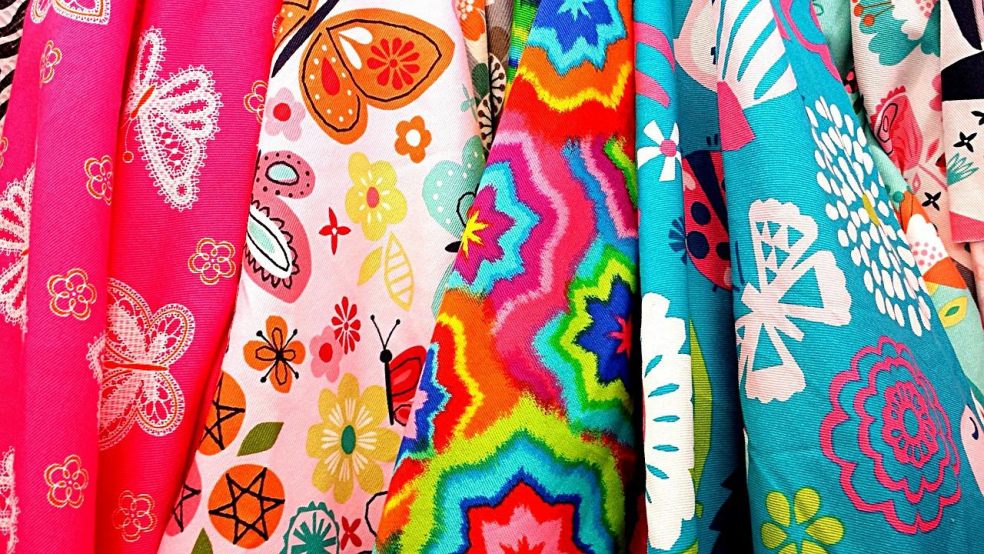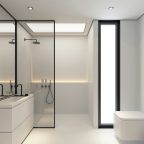
Innovative Ways to use Patterns in your Home Décor
Incorporating different patterns into your home décor can be pretty intimidating. However, when done right, you will have a fantastic piece in your hands as patterns add energy to a room. Patterns can be found in various materials, including marble veining, wood, tiles, and textiles. When not correctly combined, the appearance of the pattern can be off-putting to the eyes.
Understanding the fundamental guidelines for pattern mixing will help you to figure out how to use patterns at home. The dominant pattern in the room often sets the tone for the rest of the space, so it is super important to pick and combine the right pieces.
Equally crucial are complementary patterns in smaller scales for accent pillows, curtains, throws, and furniture, as these items provide colour and improve the room’s aesthetic appeal. So how do you get pattern pairing right? This article will provide some innovative ways to mix patterns when decorating your home.
1. Determine What Colour Palette You Love First
Before concerning yourself with matching colour patterns, you should determine which colour pattern works best. When you have a favourite colour palette, picking a pattern becomes easier. There is a warm and a cool side to every colour. Therefore, to choose your preferred colour palette, you should choose one or two warm colours and one or two cool colours to give the room a pop of character
2. Combine White with a Coloured Pattern
The easiest way to combine patterns is to pair them with a white background. There are a few different colour schemes you can look into. Popular examples include monochromatic in white and black or a nautical theme in navy blue. You should introduce a pattern colour that creates a statement without being too overwhelming to the eyes. This could be anything from colours in stripes, polka dots, bold prints, or chevron stripes.
You could get your coloured pattern from the furniture or even curtains. Colourful curtains can help your room stand out and set the tone you’re going for. You can find made-to-measure curtains from The Sewing House, allowing you to purchase various bespoke blinds and curtains in specific colours and patterns to suit your needs.
3. Use a Variety of Scales
When mixing and matching patterns, you should use a variety of size prints. A large-scale printed design gives your room a smaller feel, while a smaller scale design makes the room feel larger. Large-scale patterns can be combined with smaller-scale prints as long as the chosen colour palette belongs to the same colour family.
A dominant print should be used for artwork. Scales refer to a design with overlapping arcs and can be of various sizes. A large room with less furniture can be decorated with a large-scale pattern, while a small-scale pattern can be used to create the illusion of more space in a small room.
4. Combine Simple and Complex Patterns
Consider if you want intricate patterns that you intend to splash across your home. It would help if you considered using fewer patterns, so they don’t complicate or clash with each other. In general, experts suggest no more than four patterns. Patterns energise a room, and having too many makes it look cluttered; therefore, choose only a few.
After this is done, blend simple and complex patterns to develop the style of your space. This creates contrast without detracting from the aesthetics of the room.
5. Be Careful with Prints
To get the most out of prints, they must be mixed properly. For instance, animal prints don’t go well with other animal prints. The same can be said with animal prints and graphic prints. Splashing prints that do not go well together will give you a haphazard look, which is best avoided.
6. Use Similar Colours
Patterns in different colours can overwhelm a room, making it feel chaotic. Therefore, using a colour scheme within the same colour palette can create an aesthetically pleasing look. While you can still experiment with colours, you should be smart with your choice. The 60-30-10 rule comes in handy for this. Your room should consist of 60% dominant and 30% secondary colours, with the last 10% being your accent colour.
7. Create a Visual Balance
Too many colours and patterns can overwhelm the room, which is why you should create a visual balance when mixing and matching patterns. The designs used should be visually appealing to look at and relate to the theme of the room décor. Colours and be adequately distributed.
8. Know what Doesn’t Go
Certain patterns should never be combined with others. You must find the perfect pattern blends. Most of the time, this is often a matter of trial and error. You can place samples side by side to help prevent mistakes and find what works for you.
Final Thoughts
When combined right, patterns make an obvious statement. However, when not done right, it overwhelms a space. There are many ways to incorporate and blend patterns in your home for an appealing design, so if you’re looking for ways to make your house or apartment a setting that represents your taste, patterns can help.













